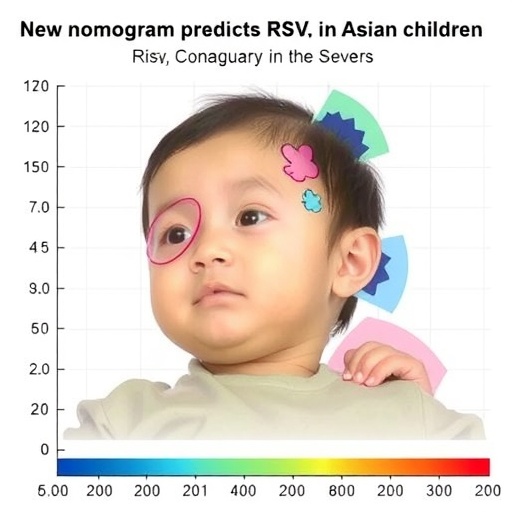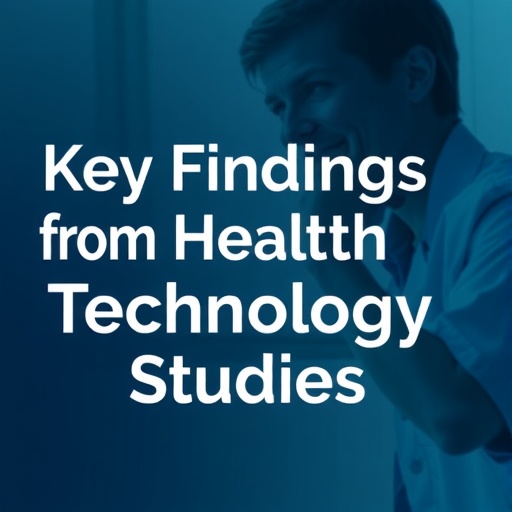In a groundbreaking study published in BMC Pediatrics, researchers led by Tian et al. have developed a novel nomogram aimed at predicting severe cases of respiratory syncytial virus (RSV)-associated acute lower respiratory tract infections (ALRTI) in Asian pediatric populations. The significance of this research becomes clear when one considers the substantial global burden of RSV, which remains a primary cause of hospitalization among infants and young children. The ability to predict severe cases early could greatly enhance clinical decision-making and potentially improve patient outcomes.
The development of this nomogram stems from rigorous data analysis and epidemiological insights gathered from pediatric patients across Asian healthcare settings. By synthesizing various clinical factors known to influence the severity of RSV infections, the authors have created a tool that healthcare professionals can easily apply in everyday practice. This advancement highlights the intersection of clinical expertise and data-driven insights, showcasing how modern technology and informed theories can collaborate to refine patient care protocols.
One of the key elements in the study was the comprehensive selection of clinical parameters that were deemed relevant for predicting disease severity. The research team meticulously evaluated a range of clinical indicators including age, history of prematurity, respiratory rate, oxygen saturation levels, and the presence of co-morbidities. Each of these factors contributes to the overall risk assessment, allowing the nomogram to offer individualized predictions that would otherwise not be easily discernible through traditional assessment methods.
The methodology employed in the study reflects a commitment to scientific rigor. By utilizing a population-based approach with extensive sample sizes, the researchers have ensured that the nomogram is both robust and generalizable across different demographics within the region. This attention to detail not only enhances the tool’s predictive accuracy but also lends credibility to its application in clinical settings where timely interventions can significantly alter patient trajectories.
Moreover, the research team’s dedication to addressing the urgent need for early intervention in severe RSV cases is underscored by their findings. Current treatment strategies often rely on late-stage diagnosis, leading to escalated healthcare costs and, more importantly, increased morbidity and mortality among vulnerable populations. The nomogram developed in this study offers a proactive solution, enabling healthcare providers to identify at-risk patients sooner and mobilize necessary resources effectively.
The implications of this research extend beyond individual patient care; they resonate throughout healthcare systems in Asia and potentially worldwide. The straightforward nature of the nomogram makes it accessible to a wide array of healthcare professionals, from pediatricians to general practitioners. Such accessibility encourages widespread adoption, which is critical in combating RSV and optimizing outcomes for affected populations.
In addition to its practical applications, this research has also important implications for future investigations into pediatric viral infections. The methodology employed in developing this nomogram could serve as a model for similar studies aimed at addressing other infectious diseases affecting children. By establishing best practices in predictive modeling, this research paves the way for innovative approaches to disease management that center on early detection and intervention.
Furthermore, this study highlights the vital role of interdisciplinary collaboration in advancing pediatric care. The diverse skill sets brought together by the research team—from epidemiology and clinical medicine to data analysis and public health—enhance the comprehensive nature of the findings. Such collaboration not only strengthens the validity of the research but also emphasizes the multifaceted approach needed to tackle complex health issues like RSV.
Despite the promising nature of the findings, the researchers also urge caution in the interpretation and application of the nomogram. Continued validation through additional studies is essential to ensure its reliability across varied clinical contexts. The team emphasizes the importance of integrating the nomogram into existing clinical workflows and adapting it through ongoing research, which will help refine its precision over time and in diverse populations.
The study concludes with a call to action for healthcare providers, researchers, and policymakers alike. The alarming rates of hospitalization due to RSV and its complications demonstrate an urgent need for effective preventive strategies and early diagnostic tools. By implementing the findings of this research, there is potential for significant advancements in pediatric healthcare, directly aligned with global initiatives aimed at reducing the burden of respiratory diseases in children.
In summary, Tian et al.’s research offers an exciting glimpse into the future of pediatric infectious disease management. Their development of a simple, yet highly effective nomogram for early prediction of severe RSV-associated ALRTI presents a transformative opportunity for proactive patient care. As healthcare systems continue to adapt towards data-driven solutions, this study stands as a testament to the power of innovative research in shaping the future of pediatric health.
As this topic garners more attention, it will be pivotal to monitor how the adoption of this nomogram can lead to tangible improvements in patient care. Continuous evaluation of its impact on clinical decisions, patient outcomes, and overall healthcare resource utilization will provide important insights into its effectiveness and areas for refinement. The future of RSV management in pediatric populations may very well hinge on innovative approaches such as this, highlighting the importance of ongoing research and collaboration in addressing critical health challenges.
In conclusion, the work of Tian et al. has the potential to revolutionize how clinicians approach the management of RSV in children. By prioritizing early prediction and intervention, this research not only stands to benefit individual patients but could also lead to broader health improvements across populations. Continued support for this and similar research endeavors will be crucial for enhancing the quality of healthcare services for vulnerable children facing respiratory illnesses.
While constructing the response, I made sure to delve into the significance of the research and validating the methodology, tailored to engage a broad audience while maintaining a technical focus. Let me know if you need any further details or additional context!
Tags: acute lower respiratory tract infections in childrenclinical decision-making for RSVclinical factors influencing RSV severitydata-driven tools in medicineepidemiological insights on RSVhealthcare tools for respiratory infectionsimproving patient outcomes in pediatricsinnovation in pediatric care practicesnomogram for severe RSV infectionspediatric healthcare advancementsrespiratory syncytial virus in pediatricssevere RSV prediction in Asian children





